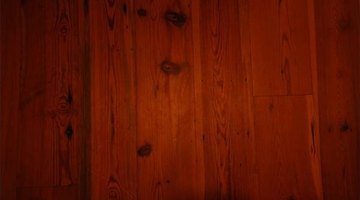How Does Polyurethane Protect Wood?
Table of Contents
Wood is porous, which means that it can absorb moisture. When wood absorbs moisture, it becomes damaged. Moisture damage can cause visual flaws, warping and rot. A polyurethane coating is a nonporous protective coating. It seals the wood and prevents moisture from entering it.

How Polyurethane Protects Wood
A polyurethane coating is durable and provides the additional benefit of preventing the wood from becoming chipped and scratched.
Polyurethane Finishes
Polyurethane coatings are commonly used on cabinets and floors. Polyurethane provides a clear coating that allows the natural beauty of the wood to show through. Polyurethane coatings come in gloss, semigloss and satin finishes. All three types provide the same protection to the wood. The difference among the three types is visual.
Application
Polyurethane wood finishes are either sprayed or painted on. Which application method to use is a matter of preference. The finish is applied to a clean wood surface and allowed to dry. A second coating may be applied. A respirator should be worn during application to prevent inhalation of the polyurethane. Care should be taken to avoid exposure of polyurethane to the eyes and skin.
Care
Wood that is coated with a polyurethane finish is virtually care-free. The durable coating does not need to be waxed. Simply cleaning the finished wood with a wood cleaner is all that is needed for regular maintenance.
Toxic Concerns
Polyurethane is a commonly found in households. Polyurethane contains toluene di-isocyanate (TDI). TDI is carcinogenic, meaning that it is a chemical that is known to cause cancer. TDI also can cause irritation to the eyes, respiratory tract and skin. The Centers for Disease Control reports that studies have shown TDI causes cancer in the pancreas, liver, mammary glands, circulatory system and skin of animals. Earthpaint makes a product called Bio Poly Wood Finish, a polyurethane-free wood finish that the company claims is nontoxic.
Writer Bio
Rose Kivi has been a writer for more than 10 years. She has a background in the nursing field, wildlife rehabilitation and habitat conservation. Kivi has authored educational textbooks, patient health care pamphlets, animal husbandry guides, outdoor survival manuals and was a contributing writer for two books in the Uncle John’s Bathroom Reader Series.
Photo Credits
- Credit: photojock. Copyright: morguefile.com/photojock.
- Credit: photojock. Copyright: morguefile.com/photojock.
More Articles



